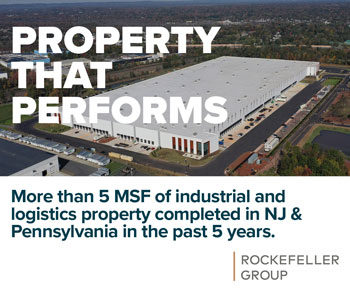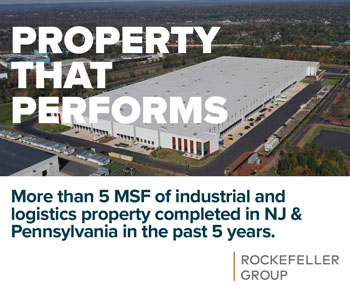By Joshua Burd
Even the staunchest supporters of the state’s incentive programs believe it’s time for a change — but they stop well short of those who call for outright eliminating the powerful economic development tools.
To that end, the Smart Growth Economic Development Coalition has proposed a series of amendments to incentives such as the Grow New Jersey tax credit. The group cited the need to right-size the offering to reflect changes in the market and to help a broader swath of businesses, while also adding flexibility to the program and rebalancing its policy objectives.
“Our message to the incoming administration and Legislature is to mend, not end the incentive program,” said Ted Zangari, co-chair of Sills Cummis & Gross P.C.’s real estate department. The programs have helped New Jersey create demand in its economy, he added, but “to unilaterally disarm and get out of the business of equalizing the cost gap that simply exists everywhere around us” would effectively kill that momentum.
Grow New Jersey
One key priority is to reduce the minimum project size to help address what the coalition identified as “probably the biggest hole in Grow New Jersey,” according to Tom Banker, who chaired the group’s incentives committee. To help small businesses, the proposal calls for easing the capital investment requirements and reducing fees in accordance with the project size, while allowing smaller applicants to collect their full award in the first year in order to mitigate the impact of recurring annual transaction costs.

Banker also noted that Grow New Jersey had aimed to help smaller businesses through the concept of incubators, he said, but called it an “unworkable” provision that went unused by landlords. Solving that problem means providing a greater benefit and incentive for landlords to create incubators, such as by broadening the pool of industries that are eligible to be part of the facility and eliminating the age limitations for eligible businesses.
“If you’re doing your job right, the incubator will mature and the (businesses) will move out of there to another location,” said Banker, president of the Banker Group LLC. “So you want the landlord to be the one getting the benefit, so they’re incentivized to create an incubator environment and you would require them to pass the savings on to the tenant.”
The coalition’s proposals also include steps to scale back Grow New Jersey in some areas. Banker said the incentive has been “wonderfully successful” as an economic development tool, but the group is recommending the state reduce the benefit and the weight that’s given to retained jobs.
There are some caveats.
“We do still think that retained jobs should count, particularly in the more distressed places,” Banker said. “And we do support continuing to have tiers of benefits, so in those that are the most distressed, we would have the highest ability to use retained jobs.”
The group has also identified ways to limit the size of the tax credits, such as by eliminating bonus awards for redundant criteria or by adjusting the awards to be dependent on the actual taxes generated by a company. Other recommendations include extending the commitment period for projects so that they generate greater demonstrable returns, along with requiring documentation of incentives available at all competitive out-of-state locations.
All told, the changes are meant to both build upon and streamline a program whose future has been cast into doubt during the recent election cycle.
ERG
The coalition has taken a similar approach for the Economic Redevelopment & Growth program, which pledges future tax revenues from a project to help its developer plug a financing gap. The program has seen significant demand over the past four years from affordable housing developers, who have bundled it with other subsidies in an effort to offset lower rents and soften the costs of requirements such as prevailing wage labor.
That’s one key reason why the coalition has proposed that the residential ERG program be used exclusively to fund affordable housing projects. The state should do so while taking other steps, the group argues, such as dedicating more of its bonding capacity to affordable housing.
“We think that should really be what residential ERG is designed to do … particularly in light of the fact that the courts in New Jersey are now addressing affordable housing in a big way and we need to have a vehicle that can really work,” Banker said.
Continuing the incentive would mean replenishing the ERG program, which has long since exhausted a $600 million allocation for residential projects. Doing so in tandem with other sources, such as Low-Income Housing Tax Credits, could be especially critical for affordable housing, given the uncertainty over federal programs that have historically supported that effort.

“The fact of the matter is we will never meet the demand for affordable housing without a commitment from this next administration to make it a priority and to create funding sources,” said David Brogan, executive director of the New Jersey Apartment Association. “So as long as they do that, then there’s an opportunity for us to meet that demand and to hit that mark.”
Among several proposals, the coalition recommends managing the program through annual or semiannual competitions based on predefined criteria, rather than a first come, first served basis. The group also proposed aligning the program criteria to meet the requirements of the Community Reinvestment Act, encouraging banks to be buyers for ERG tax credits.
Conversely, coalition members say the commercial side of the ERG program was underused, largely because the added costs such as the prevailing wage and green building requirements ultimately ate into the 30 percent subsidy that was available. The subsidy should be increased to 50 percent of eligible project costs as a means of offsetting those mandates, the group argues, subject to a limit on the developer’s returns.
The coalition is also pushing to establish a local version of ERG, which was contemplated by the 2013 Economic Opportunity Act but never got off the ground. Yet it could allow municipalities to pledge their own incremental revenues, from sources such as parking taxes and tax abatements, toward bonds dedicated to economic development projects.

“These are giving tools to a town,” Banker said. “It doesn’t make it mandatory, but if they wanted to be able to put together a package of incentives, they should be able to do that.”
Efforts and subsidies to create new mixed-use development will also provide a lift for the retail sector, which is in the midst of a major transformation.
“Take away the incentives and no one has the stamina to go through a mixed-use process for the retail of 10,000 feet underneath 200 units,” said George Jacobs, president of Jacobs Enterprises Inc. “So everything that promotes development and promotes economic activity is going to be lifeblood for the retail industry, because standalone retail is starting to really get crushed.”
Other recommendations
Flexibility: Increase program flexibility for Grow New Jersey, such as by permitting a business to change project locations so long as the new site meets the same criteria, or allowing for a new location that would result in a reduction of the award.
Rebalance program priorities: Consider scaling back or re-examining the benefits afforded to so-called Garden State Growth Zones — Camden, Trenton, Passaic, Paterson and Atlantic City — under Grow New Jersey.
Bring back UEZ: Restore the Urban Enterprise Zone law, which expired last December, with all previously approved locations to receive 50 percent of the original statutory amounts and all locations to sunset in 2026.
Parking solutions: Provide incentives for the construction of structured parking to replace surface lots near train stations, such as a fixed annual incentive pool to help fill financing gaps in transit-oriented, high-density projects. Consider similar incentives for the construction of major infrastructure needed to complete transformative projects.
Expand NJEIT: Increase access for developers and provide greater security for the New Jersey Environmental Infrastructure Trust.
Brownfield reimbursement: Re-establish the state’s brownfield reimbursement program as part of the commercial ERG platform, allowing for developers to recapture up to 75 percent of remediation costs from pledged incremental revenues.
Tweaking tax abatements: For multiphase projects, allow long-term tax abatements to be staggered for each phase, dependent on certain milestones in construction. Allow tax abatements to be extended for projects that continue to provide affordable housing.










